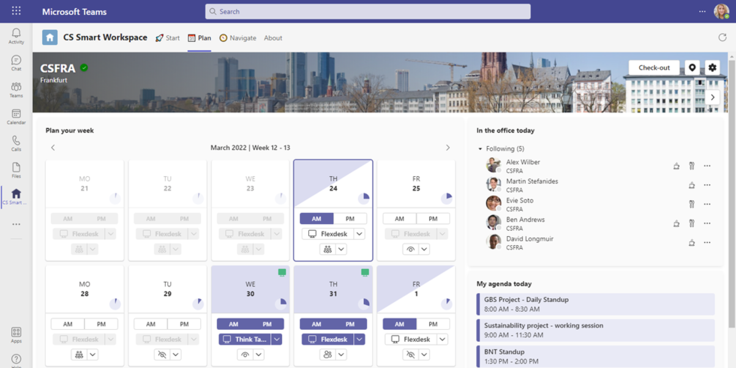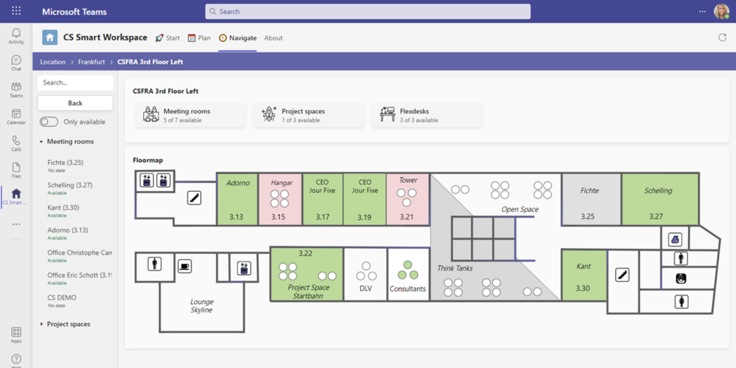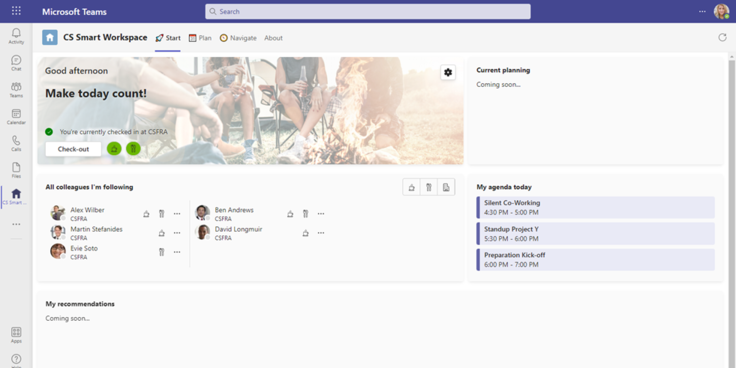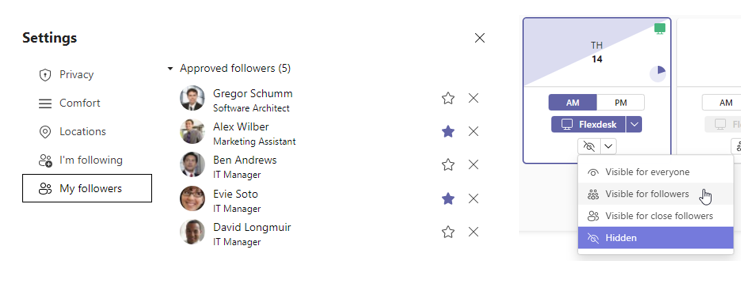Little by little, offices are filling up and employees are returning to their workplaces. After two years of remote work, meaningful face-to-face meetings are becoming increasingly important. But hybrid work is catching on; in the future, not everyone will be in the office per se like they used to be. So, it is a matter of thinking anew every day: is it worth the trip to the office?
For companies, the question is why employees come to the office and how they can create the best possible working environment for their on-site needs. The focus is on revitalizing and maintaining the corporate culture as well as personal relationships with each other. But the whole thing is not trivial when everyone is no longer always physically present.
- Who from my network is actually at the office?
- Who is available for appointments, coffee breaks, or lunch?
- How crowded will it be in the office?
- Can I find a free place to work?
With modern digital solutions, office days can be planned and managed simply and easily. The CS Smart Workspace assistance system facilitates this planning and provides options for taking a look at the utilization of an office building, booking workstations and viewing the attendance of colleagues.
In practice, it looks like this: Melissa would like to work from her desk in the office more often in the future. It is important to her to exchange ideas with colleagues and to meet with her team. To do so, she uses the CS Smart Workspace solution, which integrates natively with Microsoft Teams and can thus be used on a desktop, on the web, as well as on mobile devices. Here her office days can be optimally planned. Melissa can see in advance in the system whether workstations are free, which colleagues will be in the office on certain days, and who has time for a coffee break or lunch. Even a look at the lunch menu in the canteen is conceivable. Thanks to the integration in teams, the tool also offers a direct chat function to message colleagues directly.
Furthermore, additional features such as building maps can be integrated to facilitate navigation, especially in unfamiliar offices. Or live data on the building can be viewed via IoT sensor technology. Also optionally, a chatbot can be used to trigger direct interaction with users to alert them to certain events (e.g. to release a booked room if it is not being used).
Once Melissa has decided to make the drive to the office and has arrived, she can check in. With just a few clicks, she can let others know if she is free for lunch or a coffee in between. She can also see who is also in the office and has time to talk or take a break together.
The settings specifying who can see which information can be individually set. Similar to social media platforms such as Instagram or Twitter, «follower requests» can be sent, received, and confirmed – or rejected. Various privacy preferences can be individually set and customized, allowing all employees to choose which information to share.





